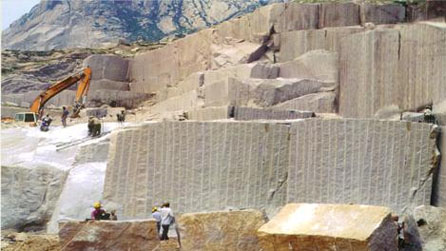
Blasting and Demolition
It is very common for explosives to be used in modern day demolition projects. However, there are certain site preparations and precautions that need to be dealt with prior to starting any projects requiring blasting and demolition.
Survey and Site Prep
A written survey of the area must be made by the person that is in charge of the demolition project who has all the necessary qualifications to perform this site survey. The survey should specifically highlight any underground utilities and other nearby properties. In addition, if the blasting of explosives may cause excessive vibration, vibration tests need to be taken in order to fully determine the safety limits so that damage may be prevented to any buildings, properties or utilities that are nearby.
In order to prepare a job site for blasting and demolition, beams, columns and other relevant structural building components may need to be removed and should only be removed by a qualified person to do so as extreme caution is mandatory during the site prep to avoid a premature collapse.
Fire Precautions
Fire anywhere near explosives is dangerous. Anyone on site should ensure that there is no type of fire or even sparks anywhere near the explosives. This refers to:
- Smoking and matches.
- Open flame lamps.
- Firearms.
- Any other type of flame, fires or devices that produce heat.
If for some reason a fire should occur, all workers on site should be moved to a safe area away from the explosive materials.
Appropriate Use of Explosives
Blasting and demolition should occur only when the sun is present and should never occur after dark. Blasting mats should be utilized where needed – such as in places where debris may be thrown up into the air. However, it is important to ensure that the blasting mats are not in the way of the electrical caps for the explosives.
Electrical blasting caps may be detonated on accident due to radar, TV or radio transmitters in the area that produce electrical energy fields. It is important that precautions be taken in order to prevent this from happening. For example, it is important that all transmitters that are within the job site and are not more than 100 feet away be deactivated and locked. Once everything has been set up appropriately and the job site is ready for blasting and demolition, it is important that the explosives being detonated as soon as possible. All connections need to be inspected by the “blaster” to ensure everything is clear and ready for fire.
Inspection Following the Blast
It is vital that once the blasting has been completed that the firing line be disconnected. Time will be permitted for all the fumes, dust, smoke and any other vapors or elements to leave prior to the return of anyone to the job site. The blaster will inspect the entire area including the rubble from the blasting to make certain that all explosives were successfully detonated prior to workers being permitted to step on the job site.
